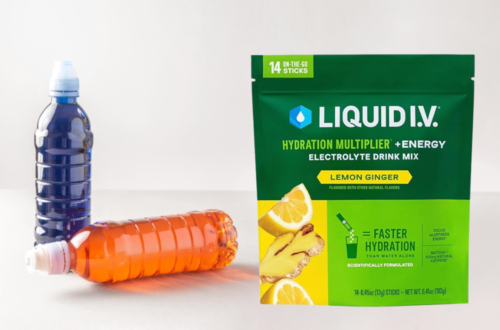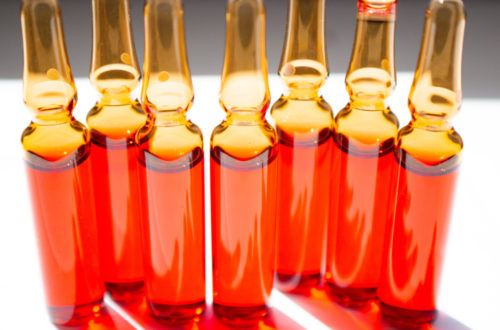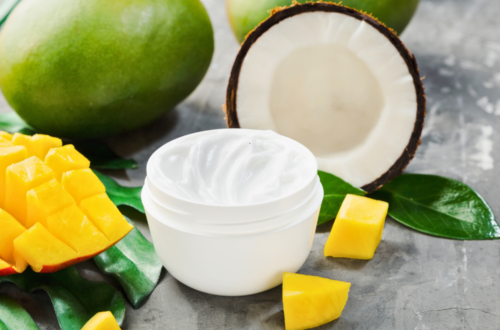
How to Make Your Own Vitamin D Spray at Home: Step-by-Step Guide
Vitamin D is essential for bone health, immune function, and overall well-being. Many people suffer from vitamin D deficiency due to limited sun exposure or dietary intake. Creating your own vitamin D spray at home is a cost-effective and convenient solution.
Table of Contents
Why Choose A Homemade Vitamin D Spray?
Many people are now opting for homemade solutions to ensure they get the purest form of vitamins. So, why choose a homemade Vitamin D spray? There are several reasons, including better absorption, cost savings, and complete control over the ingredients.
Benefits Of Vitamin D Spray Over Pills
Vitamin D sprays offer several advantages over traditional pills. One of the primary benefits is better absorption. When you spray Vitamin D directly into your mouth, it bypasses the digestive system and is absorbed more efficiently through the mucous membranes.
- Quick Absorption: Sprays are absorbed faster than pills, providing quicker results.
- Convenience: No need for water to swallow a pill. Just a quick spray, and you’re done.
- Gentle on Stomach: Since it bypasses the stomach, it can be easier for those with digestive issues.
Here’s a quick comparison table to highlight the differences:
| Feature | Vitamin D Spray | Vitamin D Pills |
|---|---|---|
| Absorption Rate | High | Moderate |
| Convenience | Very Convenient | Requires Water |
| Stomach-Friendly | Yes | Sometimes No |
Health Benefits Of Vitamin D
Vitamin D is crucial for various bodily functions. It plays a key role in bone health, immune function, and mood regulation. Here are some of the top health benefits of Vitamin D:
- Stronger Bones: Vitamin D helps in calcium absorption, making bones stronger and preventing conditions like osteoporosis.
- Boosts Immunity: It enhances the pathogen-fighting effects of monocytes and macrophages, which are crucial for immune defense.
- Improves Mood: Adequate levels of Vitamin D can help reduce symptoms of depression and anxiety.
Research shows that Vitamin D also helps in reducing inflammation and supporting cardiovascular health. Here’s a quick look at some health benefits:
| Health Benefit | Description |
|---|---|
| Bone Health | Prevents bone diseases like rickets and osteoporosis |
| Immune Support | Enhances immune function and reduces the risk of infections |
| Mood Regulation | Helps alleviate symptoms of depression and anxiety |
Cost-effectiveness Of Diy Vitamin D Spray
Making your own Vitamin D spray at home is not only healthier but also more cost-effective. Buying Vitamin D pills or commercial sprays can be expensive over time. By creating your own, you can save a significant amount of money.
- Initial Investment: The initial cost for ingredients and materials is relatively low.
- Long-term Savings: The cost per dose of a homemade spray is much less compared to store-bought options.
- Bulk Purchasing: Ingredients can be bought in bulk, further reducing the cost.
Let’s break down the cost:
| Item | Cost | Duration |
|---|---|---|
| Vitamin D3 Powder | $10 | 3 months |
| Carrier Oil | $5 | 3 months |
| Spray Bottle | $3 | Reusable |
The total initial cost is around $18, but this will last you for several months. In comparison, commercial Vitamin D sprays can cost $15-$30 for a one-month supply. Clearly, a DIY Vitamin D spray is a more economical choice.
Vitamin D3 Spray 4000 IU – Vegan, GMO-Free
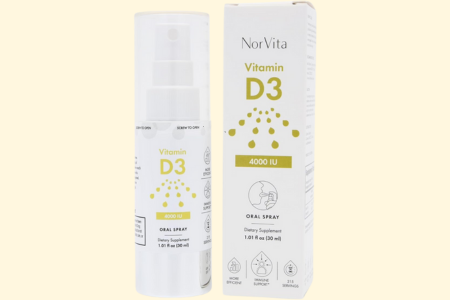
What You Need To Make Vitamin D Spray At Home
This guide will walk you through the process step by step. To get started, you’ll need some specific ingredients and equipment.
Key Ingredients For Vitamin D Spray
To make a vitamin D spray, you need a few key ingredients. These ingredients are simple and easy to find.
- Vitamin D3 Powder: Use about 1,000 IU per spray. For a standard 30 ml bottle, you can dissolve around 30,000 IU (adjust according to dosage needs).
- Distilled Water: Approximately 25-27 ml (enough to fill the majority of the spray bottle).
- Vegetable Glycerin: 2-3 ml to stabilize the mixture and ensure even distribution.
- Essential Oils (optional): Add 1-2 drops, depending on personal preference.
Equipment Required
Along with the ingredients, you will need some basic equipment to make your vitamin D spray. These items are usually found in most households or easily purchased online.
- Spray Bottles: These are essential for storing and using your vitamin D spray. Glass bottles are preferable.
- Measuring Spoons: Accurate measurements ensure the proper dosage of vitamin D.
- Mixing Bowl: Use a clean, sterile bowl for mixing the ingredients.
- Funnel: This helps to transfer the liquid into the spray bottles without spilling.
Here’s a detailed table of the required equipment:
| Equipment | Purpose |
|---|---|
| Spray Bottles | For storing and spraying the solution |
| Measuring Spoons | For accurate measurement of ingredients |
| Mixing Bowl | For combining the ingredients |
| Funnel | To transfer liquid into bottles |
Gathering these ingredients and equipment will prepare you to make your own vitamin D spray at home. With everything ready, the process becomes straightforward and manageable.
Step-by-step Instructions For Making Vitamin D Spray
This guide will walk you through each step, ensuring you have a high-quality, personalized supplement. Follow these step-by-step instructions for making Vitamin D spray.
Step 1: Gather Ingredients And Equipment
Before you start, it’s crucial to have all your ingredients and equipment ready. This ensures a smooth process. Here’s what you’ll need:
- Vitamin D3 liquid (check the dosage)
- Carrier oil (e.g., MCT oil, coconut oil)
- Essential oils (optional, for scent)
- Spray bottle (preferably amber or cobalt blue to protect from light)
- Measuring spoons
- Funnel
- Small bowl for mixing
Organizing your ingredients and equipment beforehand helps to avoid interruptions. Ensure your spray bottle is clean and sterilized to maintain the quality of your Vitamin D spray.
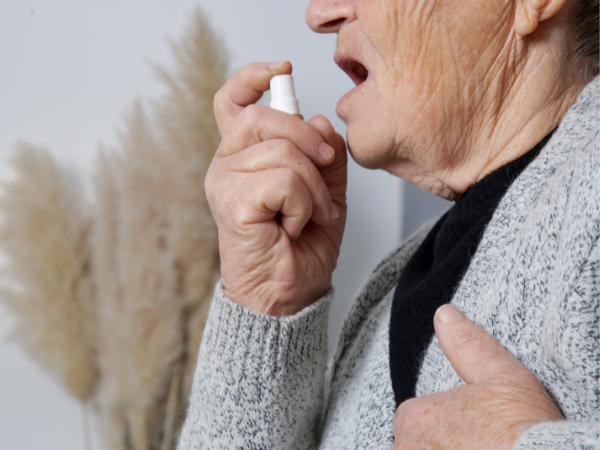
Step 2: Mix The Vitamin D With A Carrier Oil
In a small bowl, combine the Vitamin D3 liquid with your chosen carrier oil. The carrier oil helps in the proper absorption of Vitamin D. Here’s how to do it:
- Measure the Vitamin D3 liquid according to the dosage instructions.
- Add the measured Vitamin D3 to the small bowl.
- Measure the carrier oil. Use about 1 tablespoon of carrier oil for every 1000 IU of Vitamin D3.
- Combine the carrier oil with the Vitamin D3 in the bowl.
- Stir the mixture thoroughly until well blended.
Using a carrier oil like MCT oil ensures better absorption. Stirring the mixture helps to evenly distribute the Vitamin D in the oil.
Step 3: Add Essential Oils For Scent (optional)
If you prefer a scented spray, adding essential oils is a great option. Here’s how to do it:
- Choose your favorite essential oil. Lavender and peppermint are popular choices.
- Add 1-2 drops of essential oil to the Vitamin D and carrier oil mixture.
- Stir the mixture again to ensure the essential oil is evenly distributed.
Essential oils not only provide a pleasant scent but can also offer additional health benefits. Ensure the essential oils you use are safe for topical application.
Step 4: Transfer The Mixture To A Spray Bottle
Now, transfer your Vitamin D mixture to the spray bottle. Follow these steps:
- Place the funnel over the opening of the spray bottle.
- Carefully pour the mixture into the spray bottle through the funnel.
- Secure the spray top onto the bottle.
- Label the bottle with the contents and date.
Using a funnel prevents spills and ensures all the mixture goes into the bottle. Labeling the bottle helps you remember the contents and their freshness.
Your homemade Vitamin D spray is now ready for use. Store it in a cool, dark place to maintain its potency.
How To Use Vitamin D Spray
This guide will help you understand how to use your homemade vitamin D spray effectively. Using it properly ensures you get the most benefit from your supplement.
Correct Dosage For Daily Use
Determining the correct dosage for daily use is crucial for maintaining optimal health. The recommended dosage of vitamin D can vary based on age, weight, and specific health needs. Here are some general guidelines:
- Children (1-18 years): 600-1000 IU per day
- Adults (19-70 years): 800-2000 IU per day
- Older Adults (71+ years): 1000-2000 IU per day
- Pregnant and Nursing Women: 1000-2000 IU per day
To find the right dosage:
- Consult with your healthcare provider.
- Consider factors such as sun exposure, dietary intake, and existing health conditions.
- Adjust the dosage based on regular blood tests to ensure optimal vitamin D levels.
Important: Always start with the lowest recommended dose and adjust as necessary, based on medical advice.
Using vitamin D spray properly ensures maximum absorption and effectiveness. Follow these simple steps:
- Shake the Bottle: Before each use, shake the bottle well to ensure even distribution of the vitamin D.
- Open Your Mouth: Open wide and aim the spray nozzle towards the inside of your cheek.
- Spray: Press down on the nozzle to release the spray. One to two sprays are usually sufficient.
- Hold: Hold the spray in your mouth for a few seconds before swallowing. This allows better absorption through the mucous membranes.
Tip: Avoid eating or drinking immediately after using the spray to allow maximum absorption. Store the bottle in a cool, dry place away from direct sunlight.
Best Practices For Application
Adhering to best practices for application can enhance the benefits of your vitamin D spray. Here are some tips:
- Consistency: Use the spray at the same time every day to build a routine and ensure you don’t miss a dose.
- Avoid Overuse: Stick to the recommended dosage. More is not always better and can lead to toxicity.
- Check Expiry Dates: Always check the expiry date on your homemade spray to ensure its potency.
- Track Your Intake: Keep a log of your daily intake. This helps in monitoring your dosage and effectiveness.
Remember: Consistent use and proper storage are key to maintaining the effectiveness of your vitamin D spray.
Best Time To Take Vitamin D Spray
Timing your vitamin D spray can impact its effectiveness. Here are some insights:
- Morning: Taking the spray in the morning can align with natural sunlight exposure, which helps in absorption.
- With Meals: Vitamin D is fat-soluble. Taking it with a meal that contains healthy fats can enhance absorption.
- Avoid Night: Some studies suggest that taking vitamin D at night can interfere with sleep. Morning or afternoon is usually better.
Pro Tip: Pair your vitamin D spray with omega-3 or other healthy fats to boost its absorption. Consider setting a daily reminder on your phone to help you remember.
Following these guidelines can help you get the most out of your homemade vitamin D spray. Consistency, proper dosage, and timing are key to maintaining optimal health.
Vitamin D Spray Side Effects And Safety Considerations
This section will cover important aspects of using vitamin D spray, focusing on precautions for sensitive skin and the risks of overusing vitamin D.
Precautions For Sensitive Skin
People with sensitive skin should be careful when using homemade vitamin D spray. Here are some tips to keep your skin safe:
- Patch Test: Always perform a patch test before applying the spray to larger areas. Spray a small amount on your inner forearm and wait 24 hours. If you experience redness or irritation, do not use the spray.
- Use Diluted Form: Ensure the concentration of vitamin D in the spray is not too high. You can dilute the solution with water or a gentle carrier oil.
- Avoid Sensitive Areas: Do not spray on broken or irritated skin, eyes, or mucous membranes.
| Skin Type | Recommended Action |
|---|---|
| Normal | Patch test and use as directed |
| Sensitive | Patch test, dilute solution, avoid sensitive areas |
| Allergic | Avoid use if irritation occurs |
Risks Of Overusing Vitamin D
Overusing vitamin D spray can lead to serious health issues. Here are some risks to be aware of:
- Hypercalcemia: Too much vitamin D increases calcium levels in the blood, leading to nausea, vomiting, weakness, and frequent urination.
- Kidney Problems: Excessive vitamin D can cause kidney damage or kidney stones. Be mindful of your daily intake.
- Toxicity Symptoms: Symptoms of vitamin D toxicity include confusion, fatigue, and abnormal heart rhythms.
To avoid these risks, follow these guidelines:
- Consult with a healthcare provider before starting any new supplement, especially if you have existing health conditions.
- Stick to the recommended daily dose of vitamin D, which is 600-800 IU for most adults.
- Monitor your vitamin D levels through blood tests to ensure you’re not exceeding safe limits.
Remember, balance is key when using vitamin D spray to maintain optimal health without any adverse effects.
Can vitamin D spray cause a sore throat?
It’s rare, but some people may experience irritation or a sore throat from vitamin D sprays due to additives or allergens. Always check the ingredients and consult your doctor if symptoms persist.
Is vitamin D spray better than tablets?
Vitamin D sprays can be more effective for some individuals because they are absorbed through the mouth lining, bypassing the digestive system. It’s a convenient option, especially for those who have difficulty swallowing pills.
How long does the vitamin D spray last?
Most vitamin D sprays last for about 1-2 months when used as directed. However, this depends on the dosage and frequency of use. Check the label for specific guidance.


